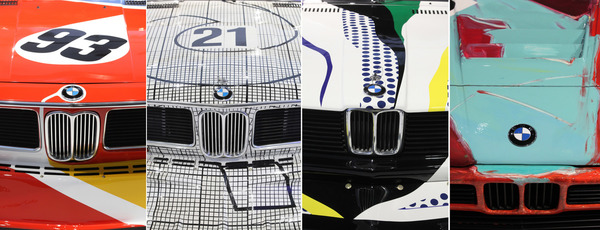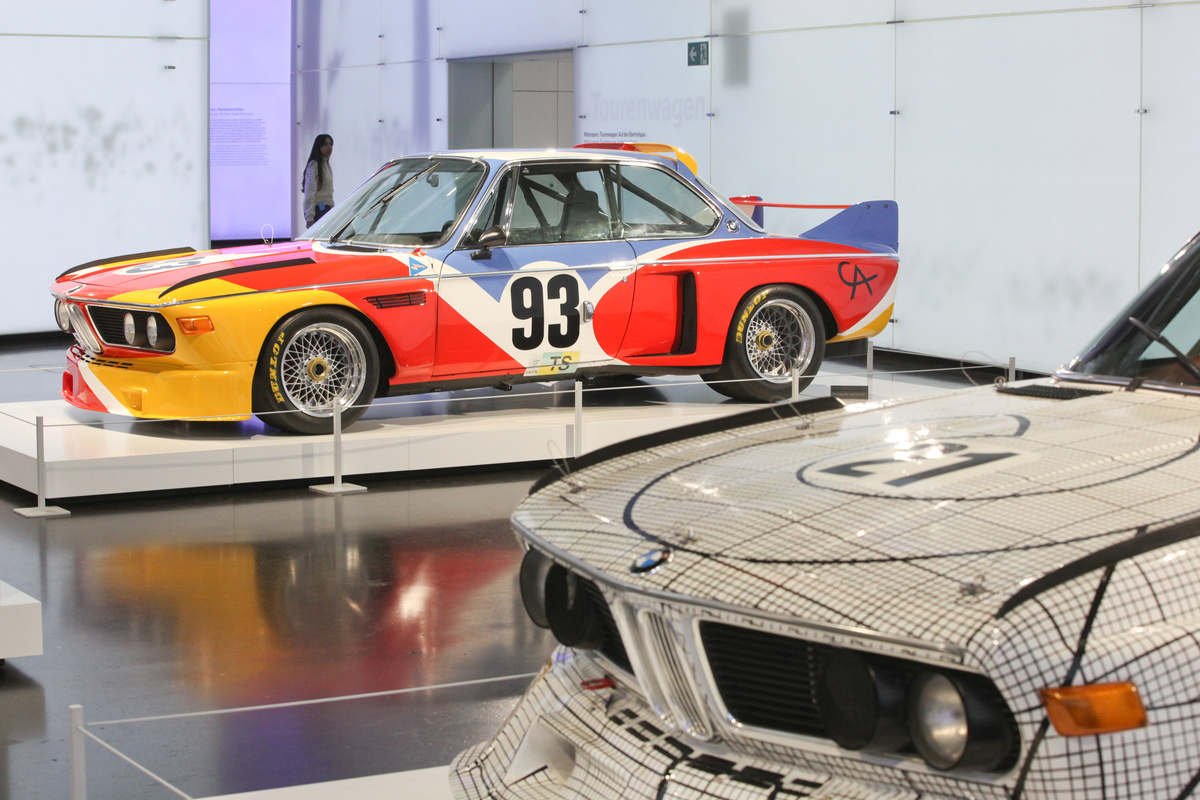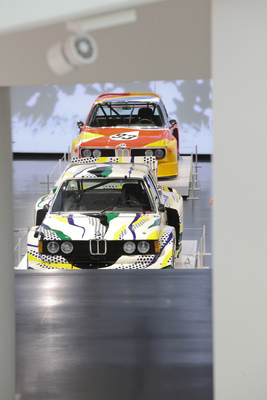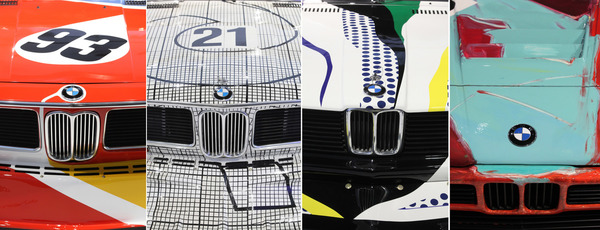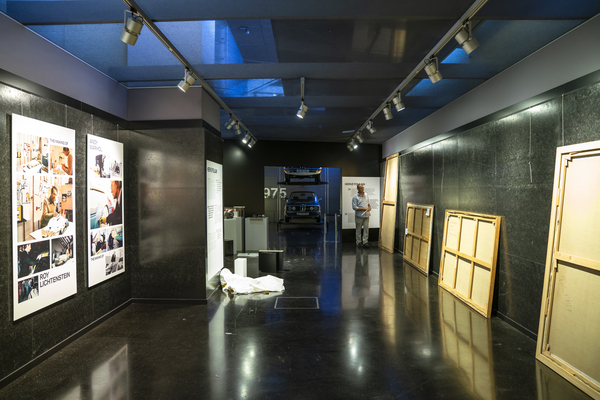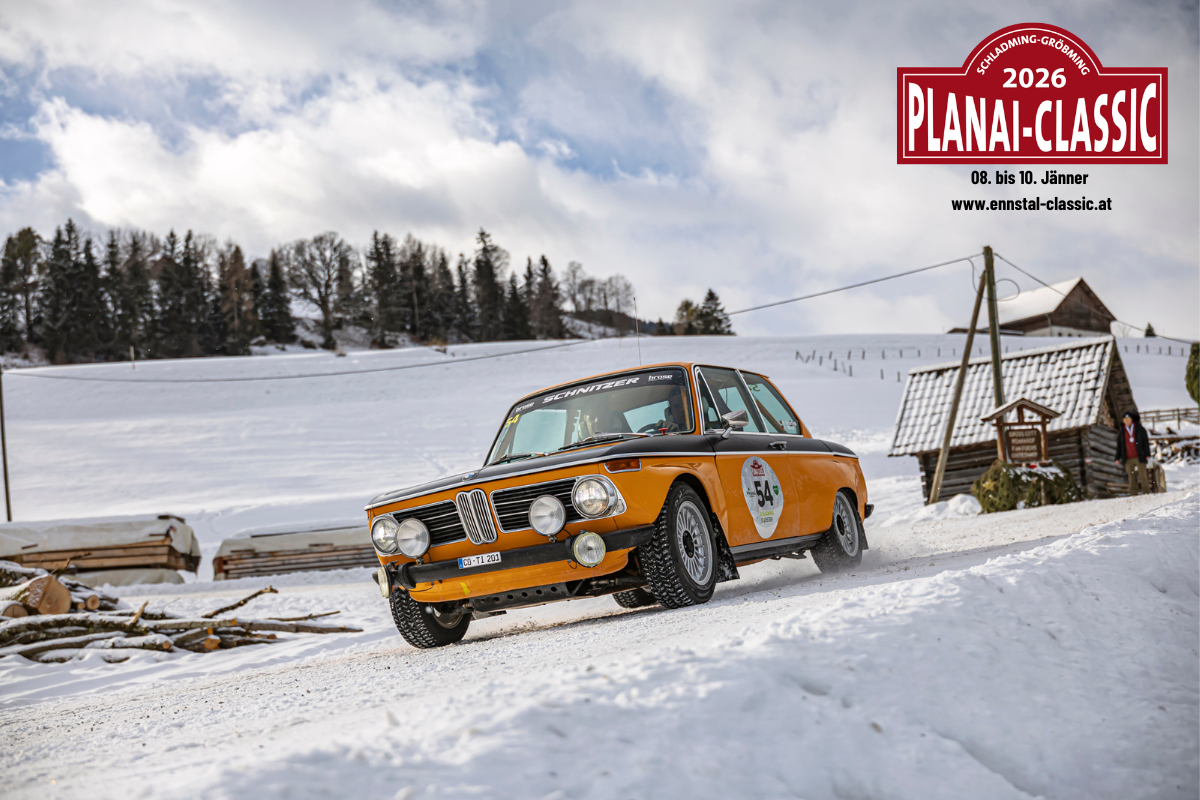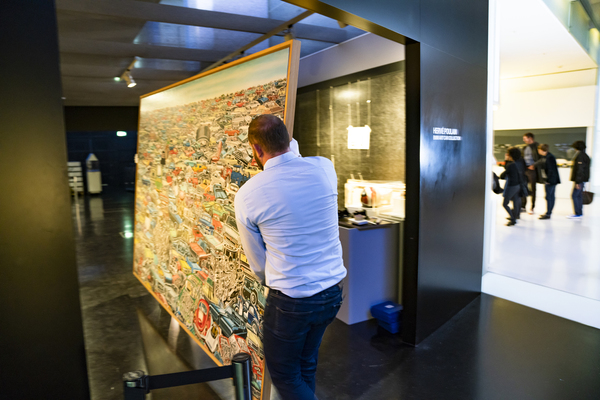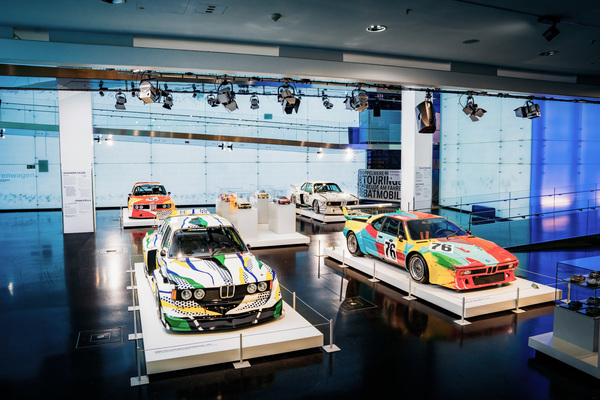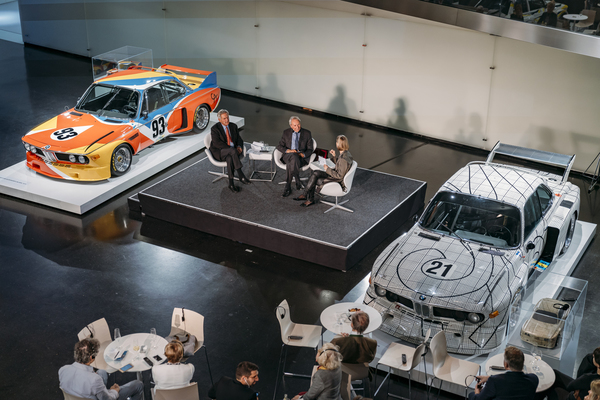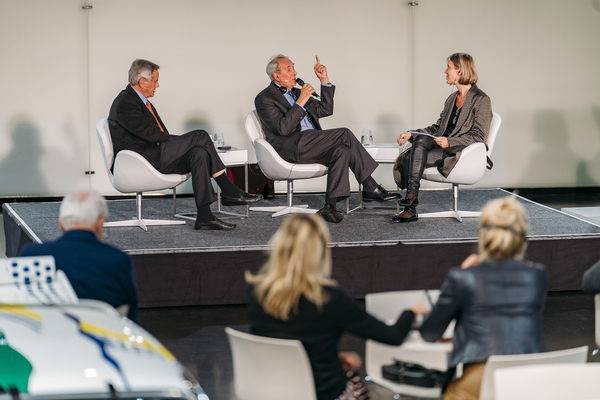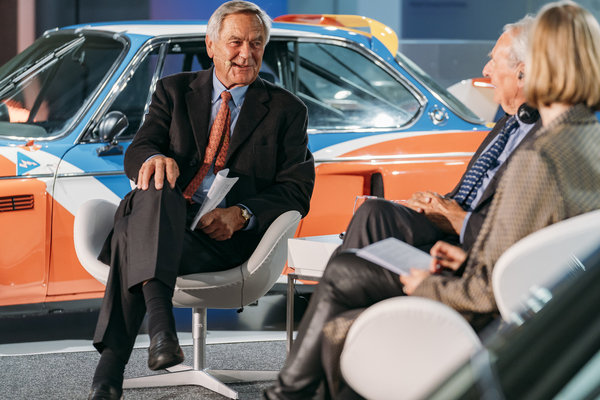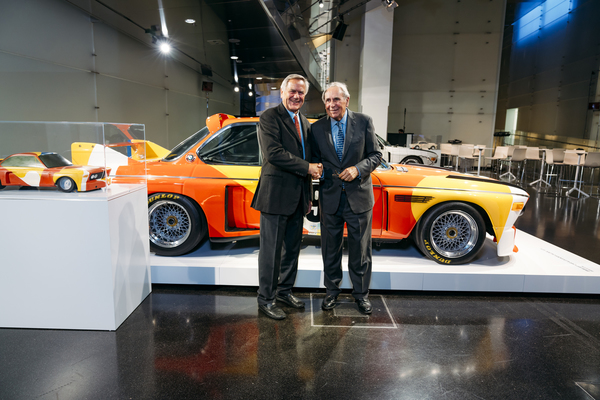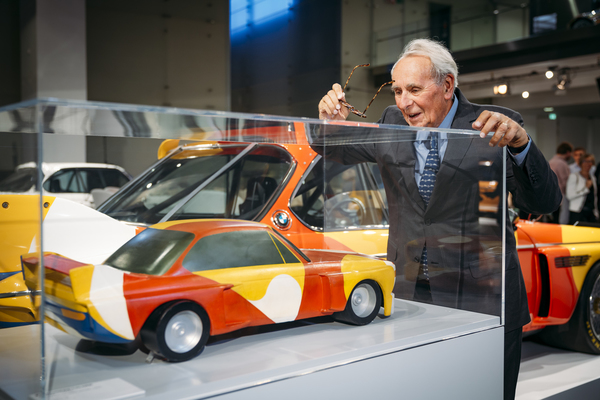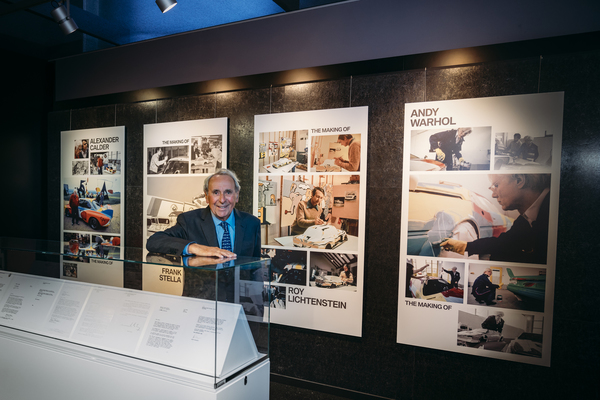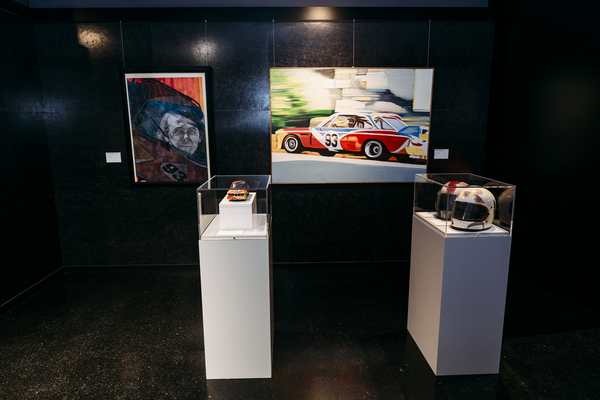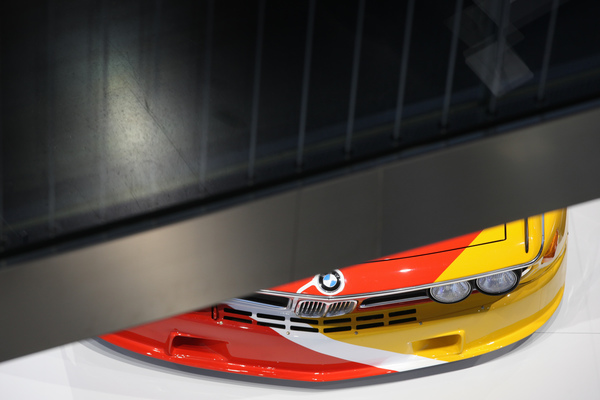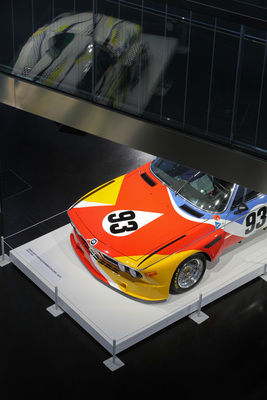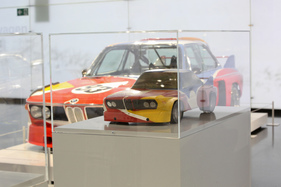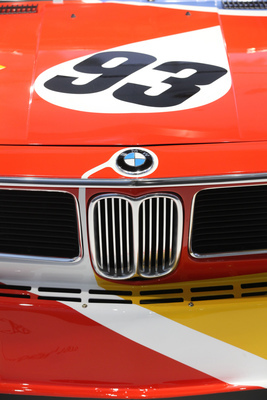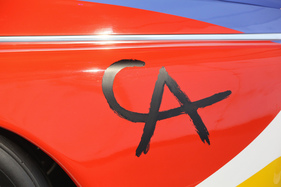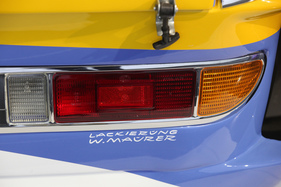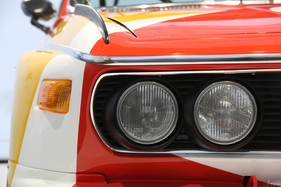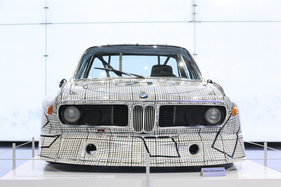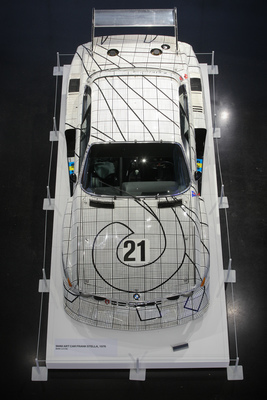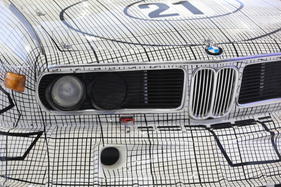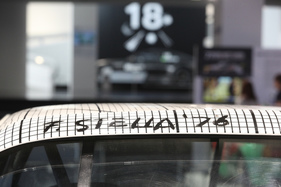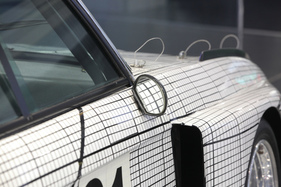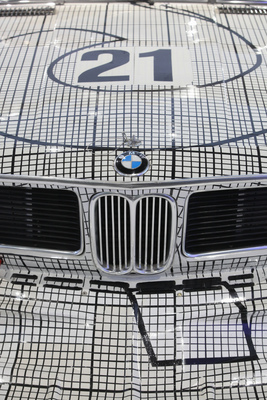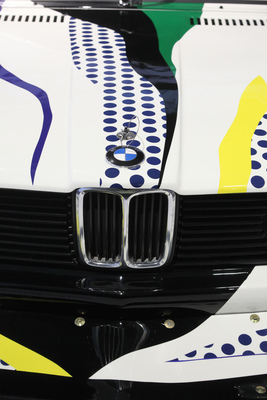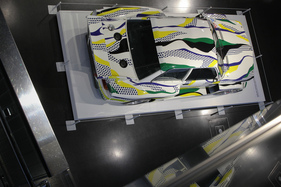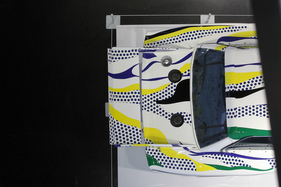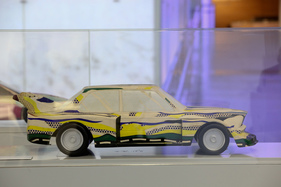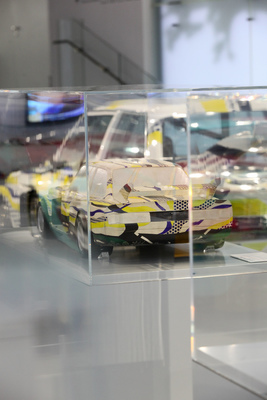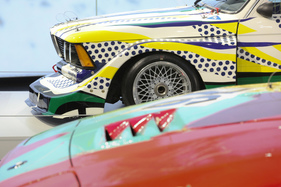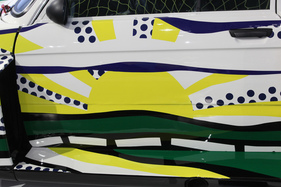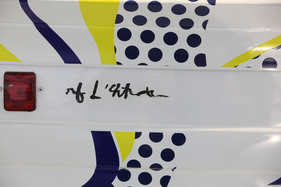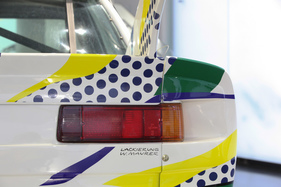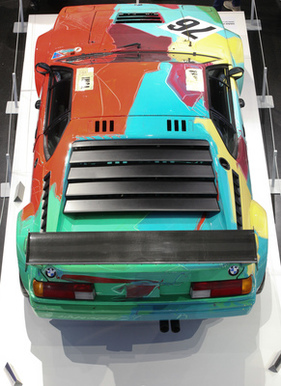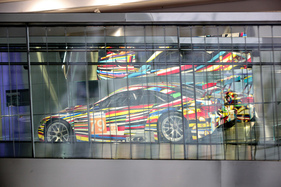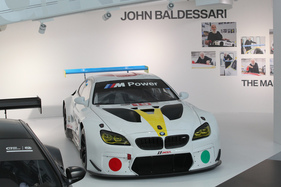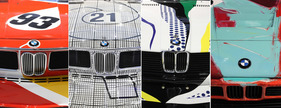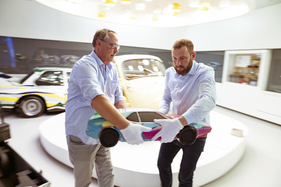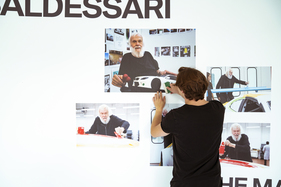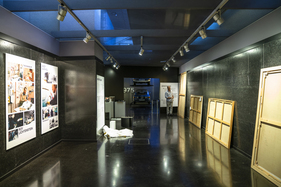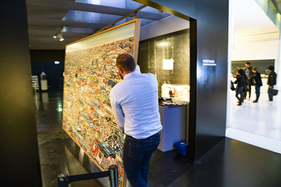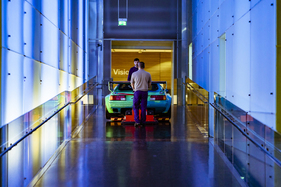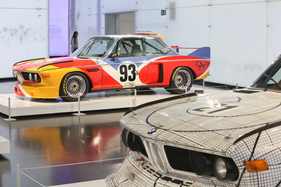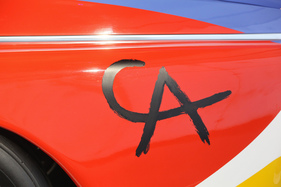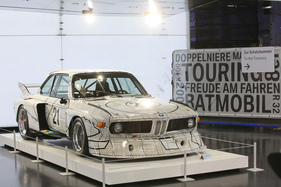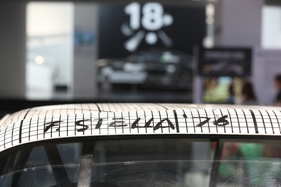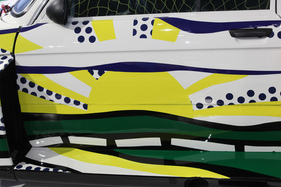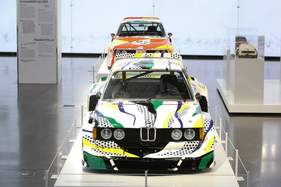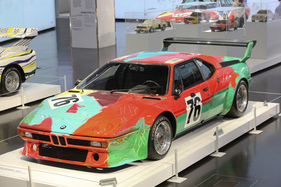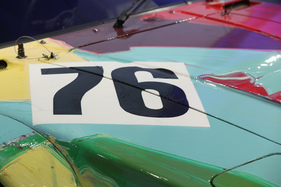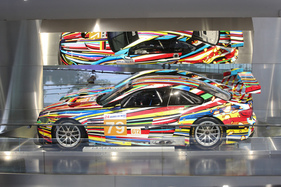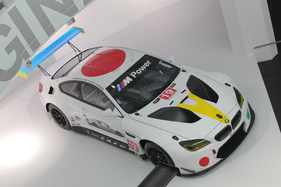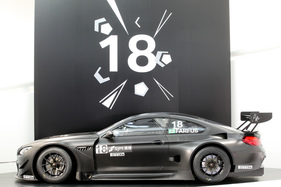It was a normal working day and the flow of visitors to the BMW Museum was limited. It was mainly tourists making their way through the special exhibition "BMW Cars Cars". In the middle stood a man who was barely noticed by the visitors, Hervé Poulain. Meanwhile, he was talking to two journalists and reminiscing about the 1970s, when he launched Art Cars.

A Frenchman and a German
The idea was brilliant. A racing car was to serve as a canvas for a work of art. This combined two passions of the then almost 35-year-old Poulain - art and motor racing. Hervé Poulain had studied law and had already become an auctioneer in 1969, selling a Dali at his very first auction.

He discovered his love of racing at the same time and began to drive Renault 8 Gordini and Alpine cars on circuits and rally tracks with some success.
In a difficult time
Cars did not have it easy in the first half of the seventies. The energy crisis had shown how dependent people were on oil and how quickly desirable individual mobility came to a standstill. Hervé Poulain wanted to convey a vision to the beleaguered population and also show that the automobile was not a bad thing. He wanted to create something new, a mobile work of art, a canvas on wheels.
His friend Alexander Calder, an American sculptor who is considered the inventor of the mobile, was convinced by the idea. The only thing missing was a suitable car with which Hervé Poulain wanted to compete at Le Mans.
Initial talks with French car manufacturers did not lead to the desired result, Jean Todt recommended that Poulain talk to Jochen Neerpasch, who was probably the only person who would really understand the idea.

And indeed, Neerpasch was enthusiastic, although even he did not have a racing car available for this venture. But instead of giving up, the head of the BMW racing department had another 3.0 CSL racing car built. This was then painted according to Calder's specifications and entered for the 1975 24 Hours of Le Mans.
The first BMW Art Car
The Calder BMW was bursting with joy and represented a colorful explosion of speed. The people at Le Mans were thrilled. When Calder was flown in to the circuit, he said it was nice that all these people had come just for him. Well, the hundreds of thousands of spectators were of course in Le Mans for the 24-hour race.
Poulain started together with Jean Guichet (winner of Le Mans 1964) and Sam Posey. Unfortunately, the three of them only made it as far as the 73rd lap, when the transmission gave up the ghost. But by then, the colorful racing wonder had thrilled people and the car also attracted a lot of attention in the press.
Poulain drove the car in awe. He remembers that it was raining during the first roll-out and that he was afraid of damaging something on the car on the first few laps.
Waiting list
Another Art Car was prepared for the following year. In the meantime, artists were already queuing up to display their art on a racing car - without payment, of course.
Once again, a CSL coupé was chosen as the basis, but this time equipped with a Schnitzer turbo engine. In contrast to the CSL from 1975, the Schnitzer racing car was a beast, barely drivable and very unreliable. Brian Redman, Peter Gregg and Poulain were supposed to get behind the wheel, but whenever Poulain took the Frank Stella-designed racing car out on the track, something broke, so he hardly got to drive it.
Although the car qualified in 8th place, two engines had already given up the ghost by this point. Redman then got off to a brilliant start, drove up to 3rd place and, as expected, retired on the 23rd lap with an oil leak.
As you can imagine, Poulain does not have fond memories of the car. But he loves the design. He told us that Calder's work was a celebration of joy, while Stella's millimeter-paper-like painting put the focus on the technology and the work of the engineers.
Lichtenstein's ode to Le Mans
In 1977, Roy Lichtenstein was commissioned to paint a racing car. Like his predecessors, Lichtenstein painted a maquette, which then served as a template for the BMW painters.
The rising and setting sun could be seen on the two doors, symbolizing the 24 Hours of Le Mans.
Together with team member Marcel Mignot, Poulain crossed the finish line in the BMW for the first time, finishing ninth overall and at the top of the two-liter class.
Warhol painted the car himself at
After a break in 1978, Andy Warhol was engaged to design the racing car for 1979. He delivered two designs, both of which were rejected. Warhol then flew to Munich to paint the car himself according to his ideas in just 40 minutes using paint and brushes.
The car was a BMW M1 from Group 4, which Poulain drove together with Manfred Winkelhock and Marcel Mignot. The trio drove up to sixth place overall, the best result for an Art Car to date. However, the racing car suffered over the 288 laps, at the end it was only running on five cylinders, one gear and the windshield wiper gave up the ghost. Aware of its fragility, the team wanted to hand over responsibility for the final laps to professional Manfred Winkelhock, which annoyed Poulain so much that he returned to Paris before the end of the race and did not live to see the success.
The M1 survived, of course, and looks much better today than it did at the end of the 24 hours, when the spoiler was practically white. Whether Warhol painted the spare parts himself or whether it was the talented BMW painters is beyond the author's knowledge.
At the center
The first four BMW Art Cars form the heart of the current special exhibition at the BMW Museum, which is open to visitors until February 2019. It is now known that there are 19 BMW Art Cars, although not all of them were racing cars. Normal road vehicles were also painted, which was not quite what Hervé Poulain had in mind.
He was therefore very pleased that they returned to racing cars with Jeff Koons and the BMW M3 GT.
Poulain was enthusiastic about Koons' livery, and he was also impressed by Baldessari's design, whereas he felt that Cao Fei's design was too elitist.
The seven art cars mentioned above will be on display in Munich, with more on show as models. The special exhibition is complemented by private collection objects from Hervé Poulain, such as the painting "Carscape" by Erro or the compressed Le Mans trophies.
Helmets of the time, which were painted by French artists to match the design of the racing car, are also on display.

Hervé Poulain, who founded the French auction house Artcurial together with partners in 2002 and is still swinging the hammer today at the age of 77, was delighted with the exhibition and considers it an honor to be at its center.

The only thing he would have liked was to hear the racing engines running again. He had already suggested several times that the Calder CSL should open the 24-hour race, but so far nobody has wanted to take part in this project. But who knows, maybe ...
